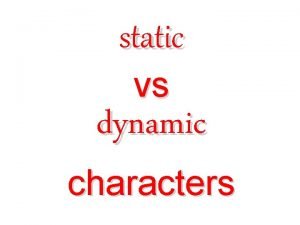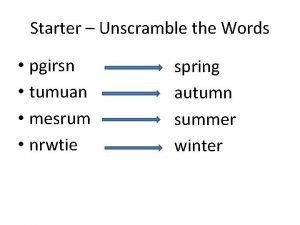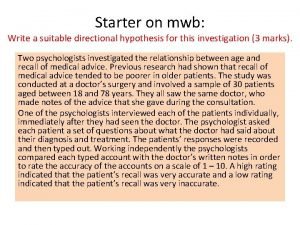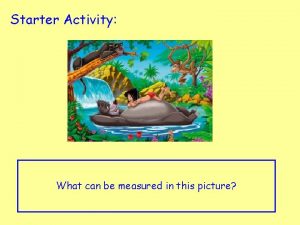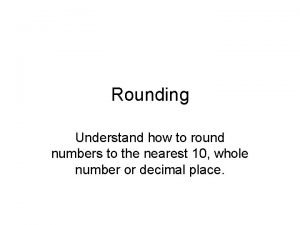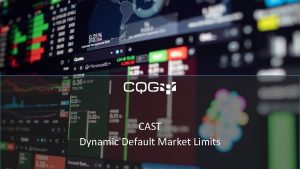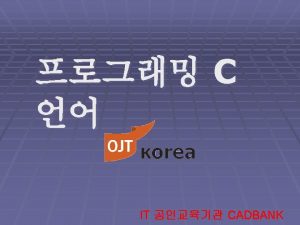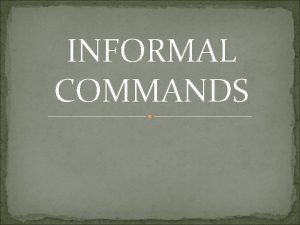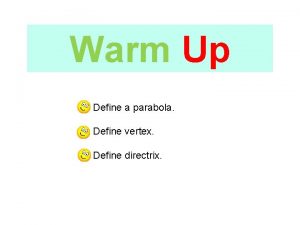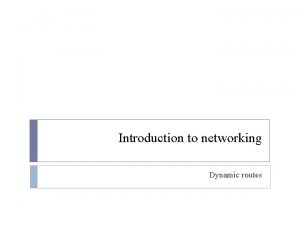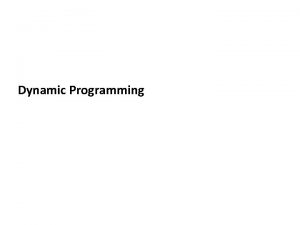Starter Define with a partner Dynamic market Market





















- Slides: 21


Starter – Define with a partner • • • Dynamic market Market share Market size Niche market Mass market Remember you need a full explanation to get 2 marks.

Glossary • Dynamic market; a market that is constantly changing to suit customers needs and wants • Market share; the % of a market that a business, product or service has • Market size; measured by volume of sales or value • Niche market; a subset of a normal market that caters for specific consumer needs and wants • Mass market; products or services that are sold or advertised to everyone at the same time in the same way

Market Positioning - Define • • Market mapping Added value Product differentiation Competitive advantage

Glossary • Market mapping; Market mapping is about positioning the products/service a business plans to provide • Added value; value added is when a business chooses to enhance the quality of a core product by providing extras to improve a customer’s utility/experience • Product differentiation; How a business differentiates its products; through reputation, service, features or value • Competitive advantage; An advantage a business has over its competitors, allowing it to generate larger than average turnover for the industry

How much would you pay for this? Think! Pair! Share!

Inputs 7 p per sandwich 1 p per sandwich Total cost per sandwich = 28. 2 p 20 p per sandwich 0. 2 per sandwich

How much would you pay for this? Why? Think! Pair! Share!

How much would you pay for this? Why? £ 1. 80

It’s because of added value! The difference between what a business pays its suppliers and the price it charges. Tesco charges more because they made it into a sandwich and it’s convenient!

How much added value? £ 1. 80 Added value is equivalent to the increase in value that a business creates by undertaking the production process. £ 1. 80 – 28. 2 p = £ 1. 518 added value

USP Unique Selling Point • A USP is a characteristic of a product that makes it different from other similar products sold in the market • A USP makes a product worth paying extra for

Quality • Businesses with a reputation for producing high-quality goods/services are able to charge a premium price for their products • Some customers insist on best quality products

Convenience • Customers are prepared to pay more for a quick service and the convenience of readymade or pre-assembled products • The benefit of this is saved time

Branding • A strong brand stands out from the competition and has its own image and reputation which some customers are able to associate with • Brand choice can say a lot about a customer

Design • A product that has a distinctive design will stand out from the competition • Customers will be able to see this difference and will be prepared to pay the higher price

Market Research -Define • • Qualitative data; Quantitative data; Product orientation; Market orientation; Primary market research; Secondary market research; Market segmentation;

Glossary • Qualitative data; data gathered that is numerical such as % of customers who buy more than once a week • Quantitative data; non numerical data such as how customers use the product • Product orientation; to sell products and services that the business wants to produce • Market orientation; to sell products or services based on customer needs and wants • Primary market research; information which has to be gathered • Secondary market research; information which already exists • Market segmentation; a whole market can be divided into sections called segments

Mind Map In groups make a mind map for one topic area: Market Research Market types Market Positioning

Homework • Data Response Page 27, 28 – Due Tuesday • Write revision notes. Bring these to class next Tuesday

Past Paper Question from 2014 2 (a) In February 2012, football star David Beckham launched a range of men’s underwear called Bodywear. This range is only being sold in H & M high street stores. This business opportunity for H & M is best described as a form of : A test marketing B trade-off C market mapping D market differentiation Answer ________ (1) (b) Explain your answer. (3) (Total for Question 2 = 4 marks)
 Define partner relationship management
Define partner relationship management Dynamic dynamic - bloom
Dynamic dynamic - bloom Leader challenger follower nicher
Leader challenger follower nicher Positioning targeting and segmentation
Positioning targeting and segmentation Dynamic character development
Dynamic character development Dynamics of personality in psychology
Dynamics of personality in psychology Static assessment vs dynamic assessment
Static assessment vs dynamic assessment Starters, movers, flyers ket pet
Starters, movers, flyers ket pet Pictogram starter
Pictogram starter Reichstag fire who was the fire starter
Reichstag fire who was the fire starter Tumuan
Tumuan Example directional hypothesis
Example directional hypothesis Starter background
Starter background Starter activity clipart
Starter activity clipart Starter activity
Starter activity Solving equations starter
Solving equations starter Rounding starter
Rounding starter Romeo and juliet starter
Romeo and juliet starter Continuous beam
Continuous beam Komposisi pakan babi grower
Komposisi pakan babi grower Innledning novelle
Innledning novelle Structure of skeletal muscle
Structure of skeletal muscle




